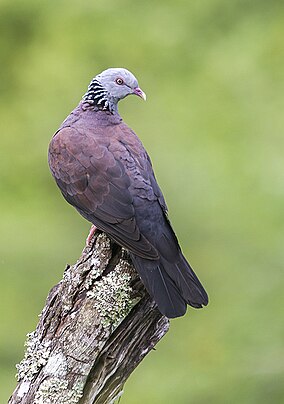Bird sanctuary
The Indian Bird Conservation Network (IBCN) has identified 212 species of birds from the Nilambur and Karimpuzha forests. Nedumkayam is classified as an Important Bird Area (IBS) of the Western Ghats Endemic Bird Area, where 16 restricted range species (RRS) have been identified; of these 16 species, eight have been sighted in Nedumkayam. There are also one critically endangered and two vulnerable bird species known to inhabit the area. In 2001 BirdLife International identified 52 near‐threatened species (NTS) in India; three of the NTS bird species are found in the IBA, but more are likely to be found once detailed studies are conducted. Classified by BirdLife International, Nedumkayam Reserve Forest lies in the Indian Peninsula Tropical Moist Forest (Biome-10): 15 bird species have been identified as typical biome assemblage, and 12 species are found in this IBA. [1] In 2003, Professor PO Nameer of Kerala Agricultural University [3] reported having seen 11 species of woodpeckers, 11 species of flycatchers, nine species of babblers, seven species of bulbuls, and three species of barbets in the area. As of 2004, there were populations of 10 IBA trigger species ranging from critically endangered/vulnerable to least concern according to IUCN categorisation and from A1 to A3 according to IBA categorization, namely: the lesser adjutant ( Leptoptilos javanicus ), white-rumped vulture ( Gyps bengalensis ), Nilgiri wood-pigeon ( Columba elphinstonii ), Malabar parakeet ( Psittacula columboides ), Malabar grey-hornbill ( Ocyceros griseus ), white-bellied treepie ( Dendrocitta leucogastra ), grey-headed bulbul ( Pycnonotus priocephalus ), rufous babbler ( Turdoides subrufus ), white-bellied blue-flycatcher ( Cyornis pallipes ), and crimson-backed sunbird ( Nectarinia minima ). The bird community showed high evenness. Maximum species richness was obtained during November and the highest diversity index was recorded during April. [1]
This page is based on this
Wikipedia article Text is available under the
CC BY-SA 4.0 license; additional terms may apply.
Images, videos and audio are available under their respective licenses.




